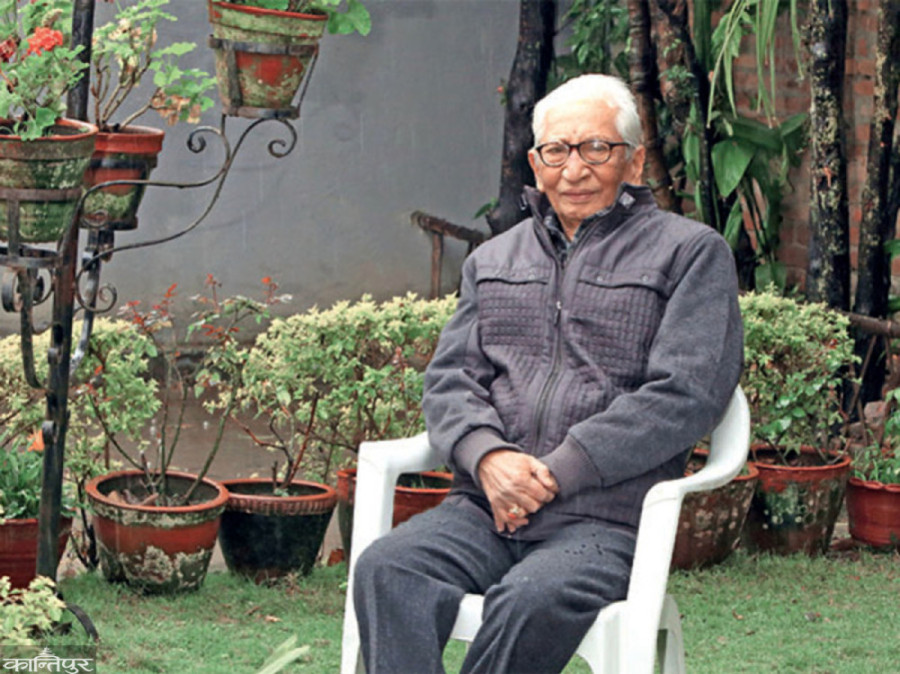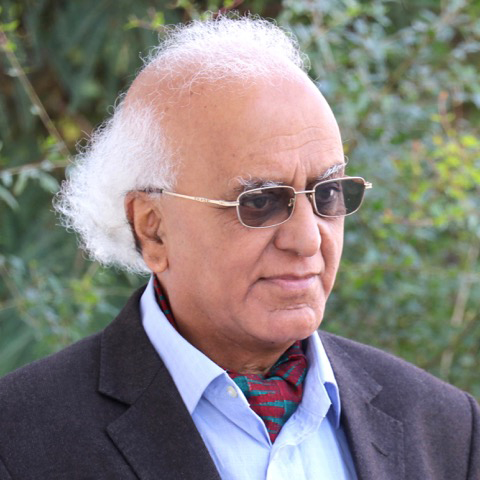Columns
Chittaranjan Nepali’s epic themes of history
His major thrust was the study of the characters in national history who had performed heroic acts.
Abhi Subedi
Chittaranjan Nepali (1931-2023), probably the oldest historian many of us knew, should be remembered today for several reasons. Like many historians who tend to present grand images of their favourite historical times and events, Chitdai, as we knew him, too, foregrounds the epic nature of events and personas of history in his writings. Historical and literary writings constitute Chitdai’s oeuvre. History, whether seen as messianic like Walter Benjamin or materialistic like Karl Marx, reverberates to the present. My interest in this subject is guided by my background as a literary person interested in the cohesion of the heroic psyche commonly evoked in the oldest literary genre, epic and “grand history”.
Chitdai had a keen interest in heroic epic characters in history who lived up to the expectations of the common people. There are mainly two trends in history writing. The most known form follows a canon that focuses on the history’s heroic or dominating characters and events. The other is oriented towards deconstructing that or putting a different perspective. The majority of Nepali historians have more or less followed the former. Significantly, Chitdai had a great respect for Nepali historians, including Baburam Acharya, Nayaraj Panta and Mahesh Chandra Regmi.
I was struck by the demise of this nonagenarian historian whom I had proposed to interview for a long article and had mentioned some topics to him. They included his choice of heroes in Nepali history, sense of nationalism, recollections about his discovery of the manuscripts of Nepali poems, and perceptions. Inquiring about his experiences and interpretations of the Nepal-China borders would be important, as he was involved in that process. Fundamentally, that ran into his family, which we can see especially from the impact of his father Sardar Medini Prasad Rajbhandari’s knowledge about the Nepal-Tibet China relationship and work in that area.
As I was familiar with his associations and company with some major Nepali writers and some of his views about personas and the imago effects, I wanted to discuss topics from those areas. Sadly, I missed that opportunity! This brief article is an attempt to allude to some of those themes.
Chitdai’s life as a government servant had its own history. But some of his works cohered with his responsibility as a government employee. His book Nepal-Chin Simana Sandhi, or ‘Nepal-China Border Agreement’, published in 1964, is an example. The long document signed on March 21, 1960, by Nepali Prime Minister BP Koirala and Chinese Prime Minister Chou En-Lai during Koirala’s China visit, was handwritten by Narayan Prasad Rajbhandari, alias Chittaranjan Nepali, who worked as a member secretary of the drafting committee.
Chitdai lived two lives, as it were. It must have been both exciting and challenging for him to put the two sides together for that long. He spent his entire life both as a bureaucrat, an active research-savvy historian and a sensitive literary researcher. He had a bizarre story to tell. He was invited to identify the dead body of Wangdi, a Tibetan fighter killed by the Nepali army. He had appeared in a photo found in the pocket of the dead. This event had no connection with his life as a historian and writer. Sitaram Baral has written a very readable storyobi of Chitdai in Nepalkhabar (November 2, 2023). Based on Chitdai’s conversations and the ease and confidence with which he wrote, we can say that he was a historian with a strong passion for uncovering important events.
Reviewing his oeuvre and what I knew from my close acquaintance, I always felt that Chitdai was impelled by a sense of heroism in history. He was familiar with Western philosophy as postulated in English philosopher Thomas Carlyle’s book On Heroes, Hero-Worship, and the Heroic in History. Though I did not discuss this subject with him in detail, I knew from reading his works and personal conversations that Chitdai’s major thrust of history was the study of the characters in national history who had performed what he considered heroic acts.
He looked at native history and the acts of some personas whom he considered heroic characters. Chitdai’s magnum opus General Bhimsen Thapa ra Tatkalin Nepal won him Madan Puraskar, a literary award, in 2013 BS. This book is founded upon his argument that Thapa is a hero in Nepali history though historians are divided about his achievements and positions. Chitdai’s other books of history take up different national heroes. The major titles speak about that. They are “Shree 5 Rana Bahadur Shah” and “Jung Bahadurko Katha”, besides others that deal with the family conspiracies and power structure of the Ranacracy as described in Ranashahiko Rolevyavastha ra Dharmapatraharu.
Chitdai was a literary critic, researcher and translator of Viśākhadatta's Mudra Rakchas and Chittadhar Hridaya’s Newar epic Sugata Saurava. He is known to have discovered the works of some Nepali poets for the first time. I have written about that aspect of his personality in my book Nepali Literature: Background and History (1978). He discovered a poet named Udayanada Aryal whom he calls a good Nepali poet. According to Chitdai, the poem, which he discovered, was written around 1776, or during the reign of Pratap Singh Shah. Not much is known about the poet's life. However, it is known that this poet's uncle, Pundit Shakti Ballav Aryal, also a poet, was a Pundit at the court of Gurkha. The poet was very much influenced by the “personality and glory” of King Prithvi Narayan Shah.
Besides, Chitdai has written a long critical essay on Diamond Shumsher Rana’s historical novel Seto Bagh, a novel based on the life of Junga Bahadur. Chitdai has criticised the "inappropriate use of history" in this novel. As a literary essayist, he published critical and progressive essays in the old issues of the literary magazine Sharada during the period of political transition in the great fifties.
Metaphorically, Chitdai, in his quest for epic themes, turned to a major poetic oeuvre in the Newar language titled Sugata Saurabha, which was written on the life of the Buddha by poet Chittadhar Hridaya in the mid-1940s when he was put to jail for his democratic views by the Rana autocracy. Nepali has brilliantly translated this epic into Nepali with a long introduction; Nepal Academy published it in 2059 BS. Chittaranjan Nepali's quest for epic themes finally rests in this great epic of peace, calm and creative dynamism.




 7.12°C Kathmandu
7.12°C Kathmandu















